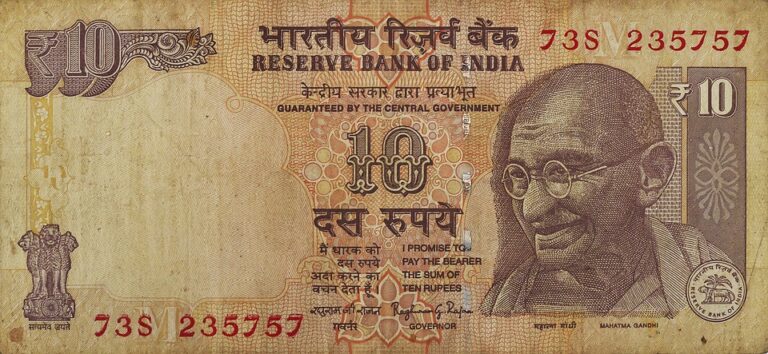Last updated Mar. 28, 2025 by Charles Zemub
An Individual Retirement Account (IRA) is a powerful tool for building a retirement nest egg. However, unexpected circumstances could necessitate withdrawal of funds from your IRA before reaching the age of 59½. Making early withdrawals generally results in a 10% penalty in addition to ordinary income taxes on the withdrawn amount. Fortunately, there are strategies and exceptions that can help you avoid this penalty.
In this comprehensive guide, we’ll explore ways to sidestep the early withdrawal penalty, including insights on IRS rules, exceptions, and smart planning strategies. By understanding the intricacies, you can make informed decisions that protect your financial future.
Understanding the IRA Early Withdrawal Penalty
The U.S. government designed IRAs to encourage long-term saving for retirement. As such, there are strict rules and penalties aimed at deterring early access to these funds. The difference between enjoying a financial safety net and incurring a hefty penalty can often boil down to planning and understanding your options.
Why Early Withdrawal Penalties Exist
The primary goal of imposing penalties on premature IRA withdrawals is to ensure that individuals use the funds for their intended purpose—retirement income. The penalty serves as a deterrent, helping individuals think twice before depleting their retirement nest egg.
Tax Implications of Early Withdrawals
In addition to the 10% penalty, any amount withdrawn from your IRA is subject to ordinary income tax. This can significantly increase your tax liability for the year, potentially pushing you into a higher tax bracket. It is crucial to be cognizant of these implications before making a withdrawal decision.
Exceptions to the Penalty
The IRS recognizes that certain situations may necessitate early access to funds. Therefore, it has outlined specific exceptions where the penalty can be avoided. These exceptions require strict adherence to IRS conditions and thorough documentation.
✓ Short Answer
To avoid the IRA early withdrawal penalty, you can utilize exceptions such as taking withdrawals for qualified higher education expenses, first-time home purchases, unreimbursed medical expenses, or health insurance if you’re unemployed. Other strategies include setting up substantially equal periodic payments (SEPP) or rolling over the funds into another qualifying retirement account. Adhering to IRS conditions and providing necessary documentation is crucial in availing these exceptions.
Strategies to Avoid the Early Withdrawal Penalty
Here, we’ll delve into various methods and exceptions that allow you to withdraw funds from your IRA without incurring the 10% penalty.
1. Substantially Equal Periodic Payments (SEPP)
A series of SEPP, also known as Rule 72(t) distributions, allow account holders to withdraw funds penalty-free. Here’s how it works:
- Plan Selection: Choose from one of three methods: required minimum distribution, fixed amortization, or fixed annuitization.
- Duration: Payments must continue for five years or until you reach age 59½, whichever is longer.
- Consistency: Payments cannot be altered without incurring penalties.
While SEPP provides flexibility, it requires a long-term commitment and careful calculation of distributions.
2. Higher Education and First-Time Home Purchases
Certain life events allow for penalty-free withdrawals:
-
Higher Education: You can use IRA funds for tuition, fees, books, and other necessary supplies for yourself, your spouse, children, or grandchildren.
- First-Time Home Purchase: Withdraw up to $10,000 for the purchase of a first home. The IRS defines a first-time homebuyer as someone who has not owned a home for at least two years.
3. Medical and Unemployment Hardships
Life’s unpredictability may lead to unforeseen expenses. The IRS provides leeway in specific hardship scenarios:
-
Unreimbursed Medical Expenses: Withdrawals are penalty-free if they exceed 7.5% of your adjusted gross income.
- Health Insurance for the Unemployed: Withdrawals to pay for medical insurance are penalty-free if you have received unemployment compensation for 12 consecutive weeks.
4. Rollover Options
Instead of withdrawing funds directly, consider a direct rollover into another qualifying retirement account:
-
60-Day Rollover: If funds are redeposited into another IRA or eligible plan within 60 days, the withdrawal is considered a rollover and not subject to penalties.
- Direct Rollovers: Transferring funds directly between retirement accounts avoids withholding and penalties altogether.
5. Disability and Death
Health-related circumstances or unfortunate events provide provisions for penalty-free withdrawals:
-
Disability: If you can demonstrate permanent disability, you are exempt from the penalty.
- Beneficiary Withdrawal: After the death of an IRA owner, heirs can withdraw funds without penalty.
Case Study Examples
Example 1: Utilizing SEPP
Consider a scenario where John, aged 50, wants to retire early. By setting up SEPP, John can take distributions from his IRA without the 10% penalty while adhering to the IRS’s rigorous conditions over the next several years.
Example 2: Overcoming Medical Hardships
Mary, aged 57, incurs substantial medical expenses due to unforeseen illness. Since her unreimbursed medical expenses exceed 7.5% of her adjusted gross income, she can take penalty-free withdrawals to cover these health costs.
Considerations Before Withdrawing
While exceptions exist, each scenario has unique financial considerations:
- Tax Implications: Even if you avoid the penalty, any withdrawn amount is subject to taxation.
- Future Retirement Needs: Assess how the withdrawal will affect your long-term retirement savings.
Planning for Emergency Withdrawals
To protect your retirement savings, consider these planning strategies:
-
Emergency Fund: Maintain a separate emergency fund to cover unforeseen expenses, reducing the need to tap into your IRA.
- Loan Options: If possible, explore alternatives like personal loans or home equity lines of credit, which may offer lower rates than the tax and penalty implications of an IRA withdrawal.
FAQs
What is an IRA early withdrawal penalty?
An IRA early withdrawal penalty is a 10% fee incurred when funds are withdrawn from an IRA before the age of 59½, unless exceptions apply.
Are there any alternatives to withdrawing from an IRA?
Maintaining an emergency fund and using it for unexpected expenses can help avoid early withdrawals. Alternatives include loans or using other savings.
How much can I withdraw for a first-time home purchase?
You can withdraw up to $10,000 for a first-time home purchase. This can be used by you, your spouse, children, or grandchildren who meet the qualifications.
What happens if I don’t roll over IRA funds within 60 days?
If the funds aren’t rolled over within 60 days, the withdrawal is taxed as income, and penalties may apply unless an exception is met.
Can I withdraw from my IRA for medical expenses?
Yes, if your unreimbursed medical expenses exceed 7.5% of your adjusted gross income, you can make penalty-free withdrawals.
By understanding these options and planning strategically, individuals can avoid unnecessary penalties while protecting their long-term retirement savings. Whether through exceptions or alternative withdrawal strategies, staying informed empowers you to make decisions aligned with your financial goals.






